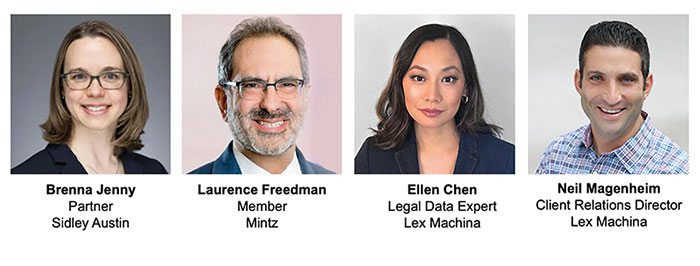On October 28, 2021, Lex Machina hosted a webcast on the recently released False Claims Report 2021. The webcast featured guest speakers Brenna Jenny (Partner at Sidley), Laurence Freedman (Partner at Mintz), and Ellen Chen (author of the report and Legal Data Expert at Lex Machina), with moderator Neil Magenheim (Director of Client Relations at Lex Machina). They discussed overarching trends in False Claims litigation including cases filed (including Qui Tam and Healthcare case filings), active districts, judges, law firms, and parties, timing metrics, case resolutions, findings, and damages. Their analysis focused on demonstrating how using Legal Analytics can enhance your practice when litigating False Claims disputes.

“I think a really helpful use [of Legal Analytics] is to be able to understand the specific False Claims Act decisions of your judge,” observed Brenna. “One of the first things I always do when I get a new False Claims Act case that I’m litigating is understand which judge it’s been assigned to, and then how they’ve come out on False Claims Act cases, what cases they tend to be, or which arguments tend to be winning arguments before them. . . and then looking at the particular cases more broadly in that jurisdiction and understanding what other judges found, how they’re interpreting the key circuit court cases.”
“I find these very interesting statistics and I haven’t seen them anywhere but from you guys,” Larry noted. “It’s very useful to know – I didn’t know before seeing these statistics that it’s sort of a two to three year average time period from unsealing to trial. It’s useful to know. It makes sense to me.”
“I think, more and more over the years as False Claims Act litigation has become such a big business, we’re seeing a higher volume of cases litigated,” Brenna said. “Thus, we’re seeing more divergent approaches and circuit splits in terms of how courts approach different issues such as materiality. So understanding the state of play on those really important issues is a really key use for this.”
Listen to a recording of the webcast or read the transcript.